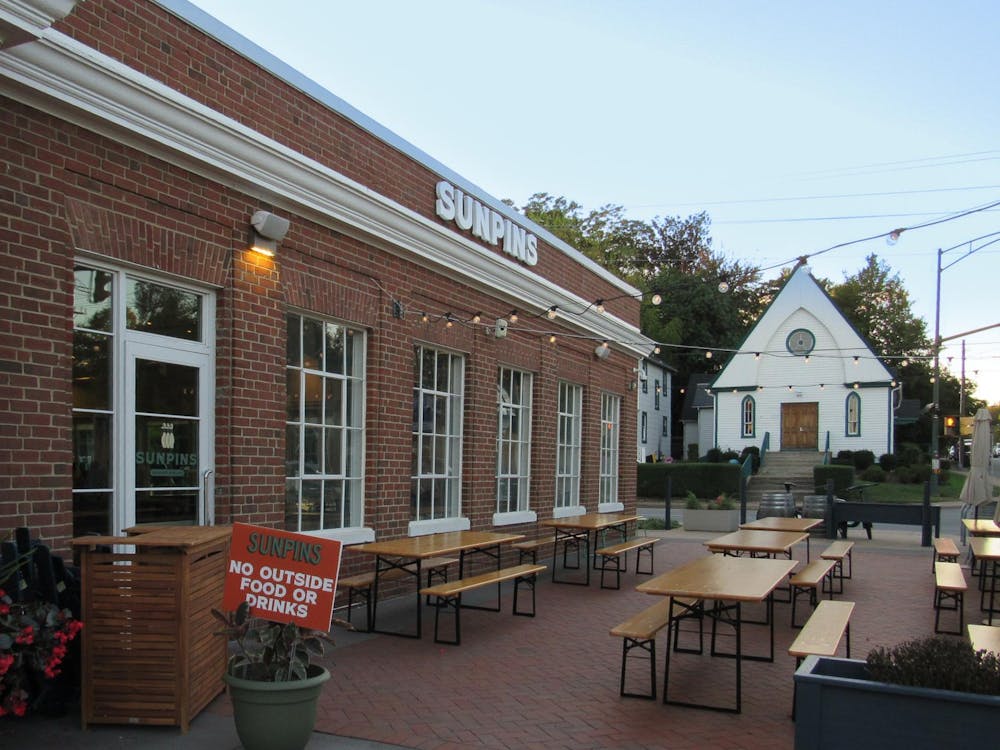Everyone knows the frustration of sitting bumper to bumper in 5 o'clock traffic, or getting stuck for hours in a construction zone. Yet, while most sit in their cars and try to distract themselves by listening to the radio, a few try to figure out what causes traffic and how to prevent it -- people like Engineering Prof. Brian Smith.
Smith has been working on traffic control and forecasting at Virginia's Smart Travel Laboratory, a University facility, in Thornton Hall since its creation last summer. He had an avid interest in traffic and felt that today's technology should be put to use to solve the problem of congestion. Smith also has worked with the Virginia Transportation Council in Charlottesville for the past year and a half.
He said his goal in his work and research is to one day allow people to go online, choose the roads and time they will be traveling and view a forecast for the day's traffic conditions, a process similar to today's weather reports. People could check traffic days in advance of their trip, before the accidents and backups even occur.
Now all public traffic reports focus on current conditions. Smith and his team, however, are working to foretell the future of traffic.
"We're trying to develop models for predicting traffic," Smith said. "That's one of the more innovative things we're doing."
Smith works with both undergraduate and graduate students to analyze traffic patterns, develop mathematical models for predicting traffic and develop methods to keep traffic flowing smoothly on the roads that now exist without widening them.
"In the past we've stuck signs out there and said good luck," he said. "Now we're trying to manage those systems [like air traffic control] in an effort to keep from widening roads."
The lab uses a variety of equipment and data, in conjunction with the Virginia Department of Transportation, that few universities have access to, he added.
"It gives us a big advantage in doing our work," Smith said.
Smith and his students use the data that comes from VDOT's sensors and cameras to analyze traffic conditions in urban areas and then translate it into maps that can be used by the public. They use the cameras positioned on interstate highways to update conditions and respond quickly to accidents.
"For every one minute of an accident with a car on the side of the road, it's another four minutes of delay," Smith said.
Smith explained that the sensors and cameras are everywhere, but to the untrained eye, they hardly are noticeable. The cameras above highways and the lines on the road in front of traffic lights (loop detectors) all monitor traffic information.
"We're trying to use information technology to help traffic move more efficiently and safely," he said.
Most of the data from these sensors is posted onto the lab's web site, which allows people to look up current traffic conditions for the D.C. and Hampton Roads areas.
"The Internet is our main focus right now because it's a dominant media for communication information," Smith said. "I look to the future when we'll use a wireless Internet to get information so people can take it anywhere," he said.
VDOT and the Smart Travel Laboratory also use these systems to try to time traffic to get as many cars through as efficiently and safely as possible.
The students working in the lab have developed most of the programs, maps, simulations and the web site.
"They've been involved in the research and development side of the whole effort," Smith said.
Third-year Engineering student Jon Mitchell spent the end of the summer developing a program that analyzes the thousands of numbers that pour into the lab so that other students can use that data in their traffic simulation programs.
"It offers really good research resources and facilities for graduate students' theses," Smith said.
Two other systems majors, third-year Engineering students Kay Siscafoose and Jon Hartinger, were also enthusiastic about their work with the lab.
"It was a good opportunity to learn about new software and technology," Hartinger said.
Siscafoose said that their work with the lab provides them with the opportunity to apply what they learn in a hands-on manner.
"It directly applies to what we learn in systems," she said.
Smith said he enjoys working with the students and seeing the progress they make in their projects.
"I'm continually amazed at how quickly they've been able to do so much," he said.
Hartinger and Siscafoose both designed and worked on computer simulations to forecast and evaluate traffic patterns without actually having to count cars or build new roads. Each student agreed that working at the traffic lab was more rewarding than an internship because they all had their own project.
Smith said his favorite part of his work with the Smart Travel Lab is that he is creating new technologies and helping people in their daily lives.
"I enjoy trying to create something new with capabilities we never had before," he said. "It's exciting to me because it can really affect people's daily lives"






